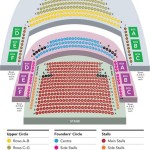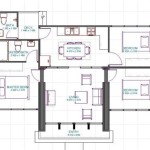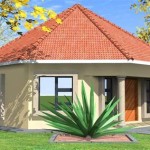Indoor Tortoise House Plans: Creating the Perfect Habitat
Providing a suitable indoor environment for a tortoise requires careful planning and construction. A well-designed indoor enclosure, often referred to as a "tortoise house," mimics the natural habitat and provides the necessary space, temperature gradients, humidity, and enrichment for a healthy and thriving tortoise.
Before embarking on construction, thorough research into the specific needs of the tortoise species is essential. Different species have varying requirements for temperature, humidity, and space. Factors such as adult size, activity level, and natural habitat should inform the design and dimensions of the tortoise house.
Several materials are suitable for constructing a tortoise house. Wood, such as plywood or melamine-coated particleboard, is a popular choice due to its durability and ease of cleaning. Glass terrariums or aquariums can also be utilized, particularly for smaller species or juveniles. Regardless of the chosen material, ensuring proper ventilation is paramount to prevent the buildup of harmful bacteria and fungi.
The size of the enclosure should be proportionate to the size and activity level of the tortoise. Larger tortoises require significantly more space to roam and explore. A good rule of thumb is to provide a minimum floor space that is at least four times the length of the adult tortoise's shell, both in length and width. For highly active species, even larger enclosures may be necessary.
Creating a temperature gradient within the enclosure is crucial for thermoregulation. Tortoises are ectothermic, meaning they rely on external sources of heat to regulate their body temperature. One end of the enclosure should be designated as a "basking spot" with a heat lamp providing a temperature between 90-100°F (32-38°C), depending on the species. The opposite end should remain cooler, allowing the tortoise to select its preferred temperature.
Maintaining appropriate humidity levels is another essential aspect of a successful tortoise house. Humidity prevents dehydration and respiratory issues. The required humidity level varies depending on the species, with some requiring higher levels than others. A shallow water dish, large enough for the tortoise to soak in, can help increase humidity. Regular misting of the substrate can also be beneficial.
The substrate, or flooring, of the tortoise house plays a vital role in maintaining humidity and providing a natural environment. A mixture of soil, coconut coir, and play sand is a common and effective substrate choice. Avoid using cedar or pine shavings, as they can be toxic to tortoises. The substrate should be deep enough for some species to burrow, mimicking their natural behavior.
Enrichment within the enclosure encourages natural behaviors and prevents boredom. Providing hiding places, such as rocks, logs, or commercially available hides, gives the tortoise a sense of security. Including various obstacles and climbing structures can also promote exercise and exploration. Live, non-toxic plants can be added to create a more natural environment and provide a source of grazing, but ensure they are safe for the specific tortoise species.
Lighting is a critical component of a healthy tortoise habitat. In addition to the basking lamp for heat, providing UVB lighting is essential for calcium metabolism and overall health. UVB rays are necessary for the synthesis of vitamin D3, which is crucial for the absorption of calcium. Without adequate UVB exposure, tortoises can develop metabolic bone disease, a serious and potentially life-threatening condition.
Regular cleaning and maintenance of the tortoise house are essential for hygiene and disease prevention. Spot cleaning of feces and uneaten food should be performed daily. A deeper cleaning, involving replacing the substrate and disinfecting the enclosure, should be conducted every few months, depending on the size of the enclosure and the number of tortoises housed within.
Constructing an indoor tortoise house requires careful planning and attention to detail. By considering the specific needs of the tortoise species and providing a suitable environment with appropriate temperature gradients, humidity, substrate, enrichment, and lighting, owners can contribute significantly to the health, well-being, and longevity of their tortoise companions. Regular maintenance and monitoring of the environment are crucial for ensuring a thriving and enriching habitat.
Consulting reputable resources, such as experienced reptile veterinarians and herpetological societies, is highly recommended. These resources can provide valuable information and guidance on species-specific requirements and best practices for creating a successful indoor tortoise house.
How To Make An Indoor Tortoise House Quora

Indoor House Ideas Tortoise Enclosure Russian

How To Make Indoor Tortoise Enclosure Easy 7 Steps Pets Nurturing House Habitat

Enclosure Ideas Tortoise Forum
How To Make An Indoor Tortoise House Quora

Ultimate Tortoise Enclosure Diy Build Start To Finish

How To Build The Perfect Russian Tortoise Enclosure Allan S Pet Center

10 Free Diy Tortoise Enclosure Plans You Can Make Today With Pictures Pet Keen

Indoor Enclosure I Made For Our Newest Little Family Member Yurdle The Turtle Aka Columbus Tortoise Habitat Sulcata

7 Diy Tortoise Enclosure Ideas You Can Easily Make With Pictures Hepper








